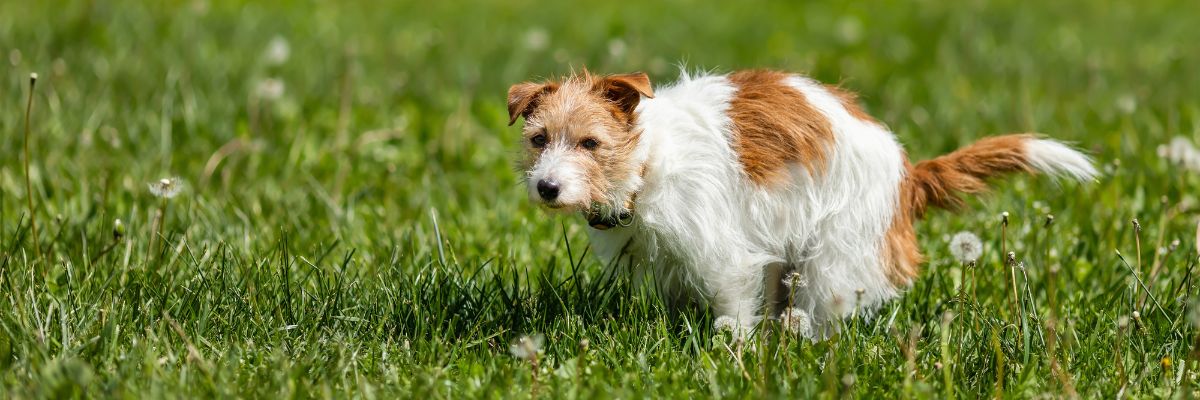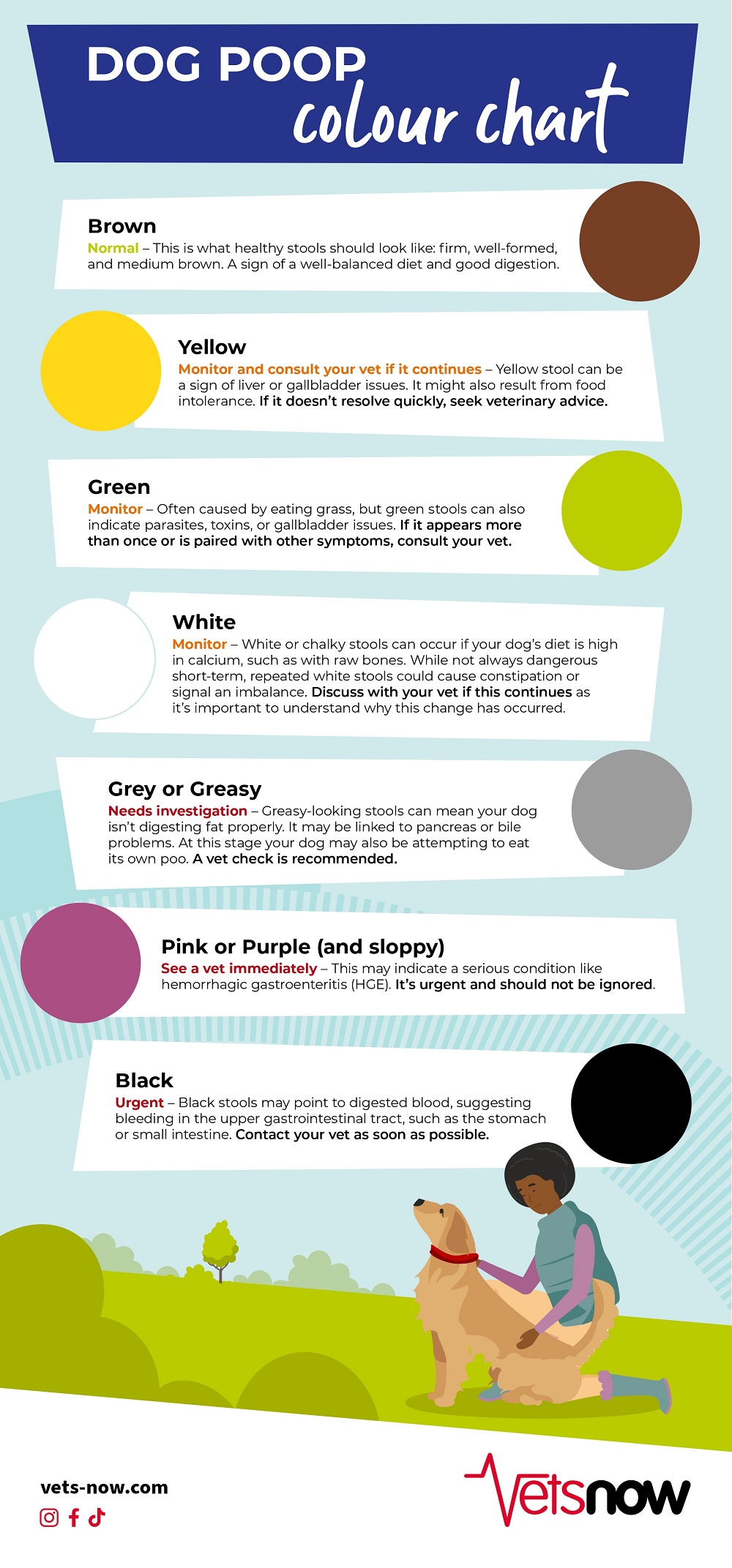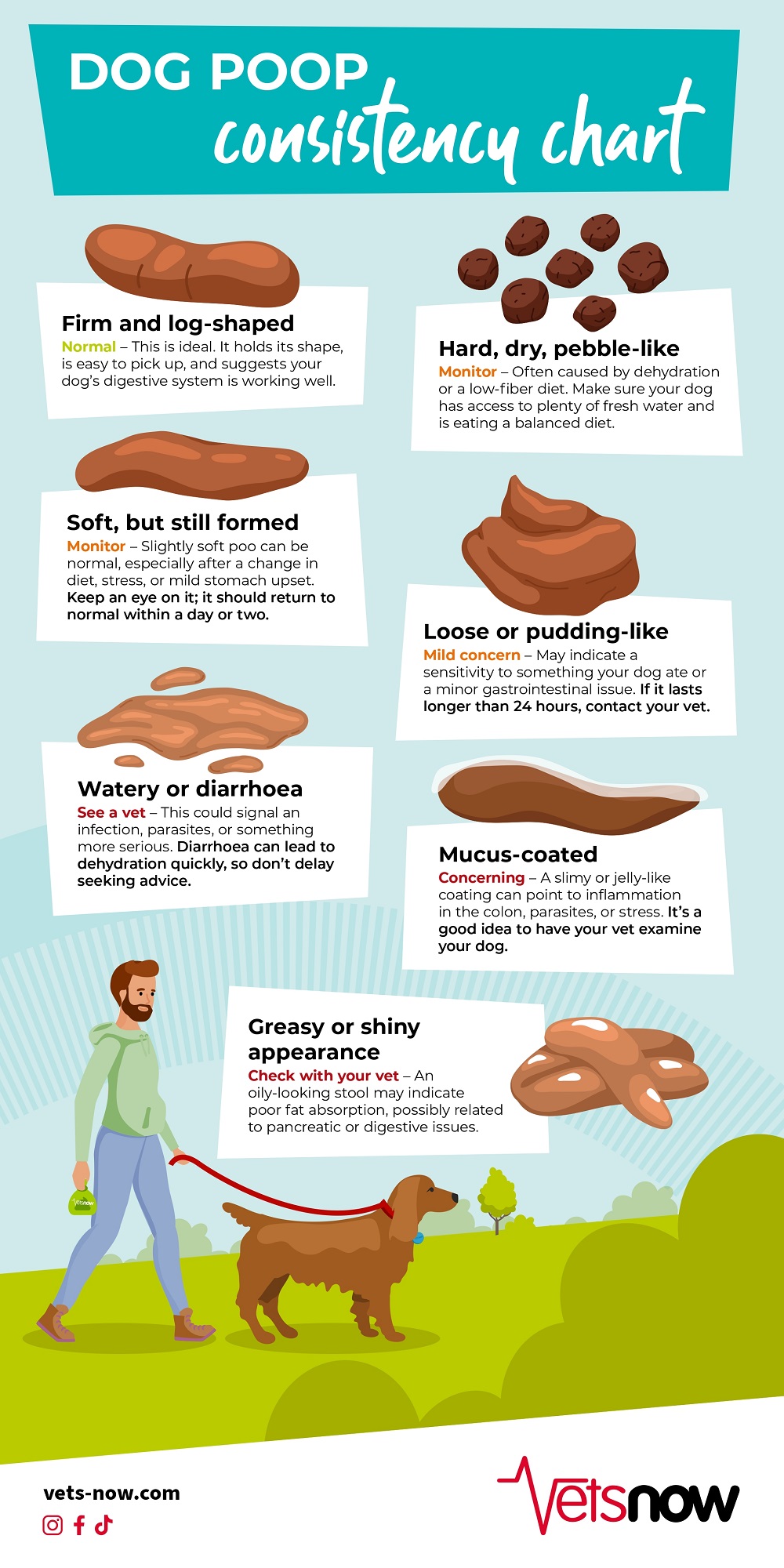Do you need help?

As pet owners, we all want to keep our dogs happy and healthy, and one of the best ways to monitor your dog’s health is by paying attention to their poop.
From the colour and consistency to changes in frequency, your dog’s poop can be one of the first signs that something is not quite right.
We’ve put together this easy guide to help you understand what your dog’s stool should look like and when it might be time to speak to your vet.
Whether you’re looking after a new puppy, caring for a senior dog, or simply want to be a more informed pet owner, our handy infographic will walk you through:
- What healthy dog poop looks like
- Common colours and what they mean
- Different consistencies and what they could signal
- When to monitor and seek advice from your vet
Take a look at the images below for a closer read. From here, you can also download a PDF or embed the infographic on your own blog or website.
 Embed this infographic on your site. Click the embed button and copy and paste the code onto your site to show the infographic.
Embed this infographic on your site. Click the embed button and copy and paste the code onto your site to show the infographic. Firm and Log-Shaped
Interpretation: Normal – This is ideal. It holds its shape, is easy to pick up, and suggests your dog’s digestive system is working well.
Soft, but Still Formed
Interpretation: Monitor – Slightly soft poo can be normal, especially after a change in diet, stress, or mild stomach upset. Keep an eye on it; it should return to normal within a day or two.
Loose or Pudding-Like
Interpretation: Mild concern – May indicate a sensitivity to something your dog ate or a minor gastrointestinal issue. If it lasts longer than 24 hours, contact your vet.
Watery or Diarrhoea
Interpretation: See a vet – This could signal an infection, parasites, or something more serious. Diarrhoea can lead to dehydration quickly, so don’t delay seeking advice.
Hard, Dry, Pebble-Like
Interpretation: Monitor – Often caused by dehydration or a low-fiber diet. Make sure your dog has access to plenty of fresh water and is eating a balanced diet.
Greasy or Shiny Appearance
Interpretation: Check with your vet – An oily-looking stool may indicate poor fat absorption, possibly related to pancreatic or digestive issues.
Mucus-Coated
Interpretation: Concerning – A slimy or jelly-like coating can point to inflammation in the colon, parasites, or stress. It’s a good idea to have your vet examine your dog.
 Embed this infographic on your site. Click the embed button and copy and paste the code onto your site to show the infographic.
Embed this infographic on your site. Click the embed button and copy and paste the code onto your site to show the infographic. Brown
Status: Normal – This is what healthy stools should look like: firm, well-formed, and medium brown. A sign of a well-balanced diet and good digestion.
Green
Status: Monitor – Often caused by eating grass, but green stools can also indicate parasites, toxins, or gallbladder issues. If it appears more than once or is paired with other symptoms, consult your vet.
Yellow
Status: Monitor and consult your vet if it continues – Yellow stool can be a sign of liver or gallbladder issues. It might also result from food intolerance. If it doesn’t resolve quickly, seek veterinary advice.
Black
Status: Urgent – Black stools may point to digested blood, suggesting bleeding in the upper gastrointestinal tract, such as the stomach or small intestine. Contact your vet as soon as possible.
Pink or Purple (and sloppy)
Status: See a vet immediately – This may indicate a serious condition like hemorrhagic gastroenteritis (HGE). It’s urgent and should not be ignored.
White
Status: Monitor – White or chalky stools can occur if your dog’s diet is high in calcium, such as with raw bones. While not always dangerous short-term, repeated white stools could cause constipation or signal an imbalance. Discuss with your vet if this continues.
Grey or Greasy
Status: Needs investigation – Greasy-looking stools can mean your dog isn’t digesting fat properly. It may be linked to pancreas or bile problems. At this stage your dog may also be attempting to eat its own poo. A vet check is recommended.

